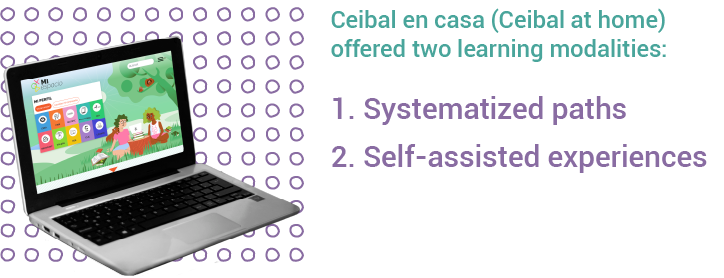With in-person classes impossible, digital platforms became indispensable in coordinating interactions between students, families and teachers, guaranteeing the continuity of the education process in Uruguay.
With in-person classes impossible, digital platforms became indispensable in coordinating interactions between students, families and teachers, guaranteeing the continuity of the education process in Uruguay.
The internet and other media became practically the only places where a safe proximity could be constructed. This in turn demonstrated the importance of having educational resources and infrastructure to offer student-focused, online education. This was feasible in Uruguay because the country had implemented the Plan Ceibal at national level, with universal coverage in the public education system at primary level and the first years of secondary school, including the provision of personal computers and access to education resources for all students.

For the implementation of Ceibal en casa the support and efforts of the whole teacher collective was essential, working in every education community, using, transforming and giving new meaning to the educational resources provided, as well as applying creativity to develop their own content and ideas. Teachers played a fundamental role as facilitators and creators of learning experiences encouraging students and their families to mobilize, which strengthened ties between all those involved and consolidated the school as a learning community.
Plan Ceibal resources to mediate learning
At the outset of the pandemic, Plan Ceibal consisted of an ecosystem of content and platforms offering over 173,000 educational resources. This includes the Learning Management System CREA, gamification platforms, adaptive mathematics for primary and secondary education, a digital library with over 8000 books—accessible to all the inhabitants of the country—free school texts for students and a collection of 1500 open educational resources, one of the most complete and robust in Latin America.

New resources were also introduced that focused on improving digital interaction between students and teachers, and the participation of families as key facilitators in the teaching and learning process. Videoconference functions were added to CREA to take advantage of synchronous activities and to allow audiovisual group interaction between teachers and students. Although Plan Ceibal had incorporated the mass use of videoconferences in 2013 for English language distance learning in schools, this was the first time that this method was fully integrated into the CREA platform, becoming completely available for all teachers and students in public primary and secondary education.
To facilitate the learning experience, Ceibal en casa designed and made available support and orientation resources for the main figures participating in the continued education programme: teachers, students, and families. Teaching strategies were shared, facilitated by specific communication actions, via the Plan Ceibal website and social media, with a view to involving every one of the relevant groups in the virtual learning environments proposed. For example, students were offered diverse games and creative activities to suit the curriculum. Teachers had access not only to teaching resources but also to consultation services, exchange forums, tutorials, virtual training and directions for distance learning. Lastly, families were given daily tips on how to orient their children with recommended content for different knowledge areas and to provide social and emotional support.
Ceibal en casa also incorporated educational content developed in multiplatform, transmedia formats, which included traditional media, social networks, Plan Ceibal platforms, as well as in-person interactions in education centres and alternative spaces, including students’ homes.
